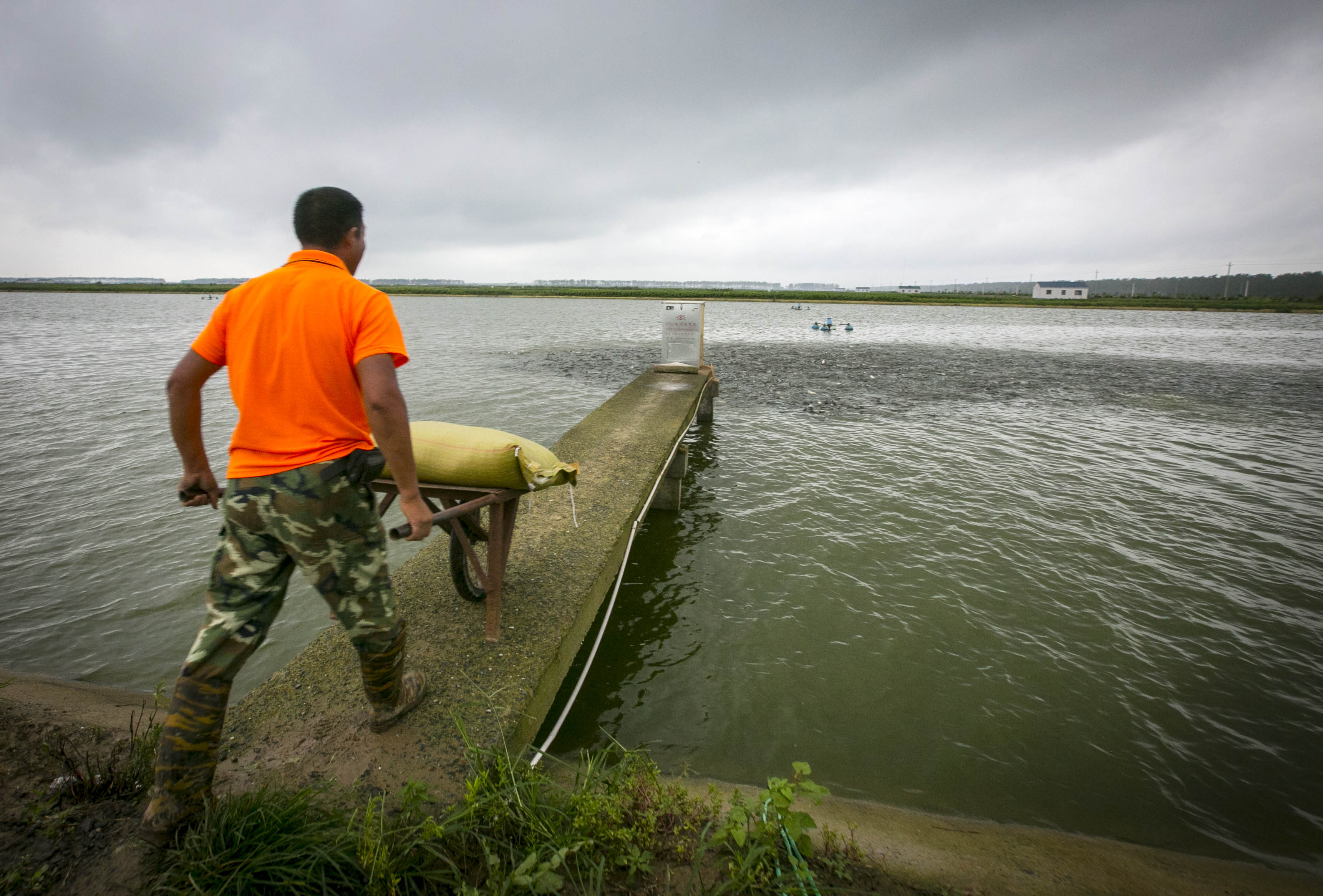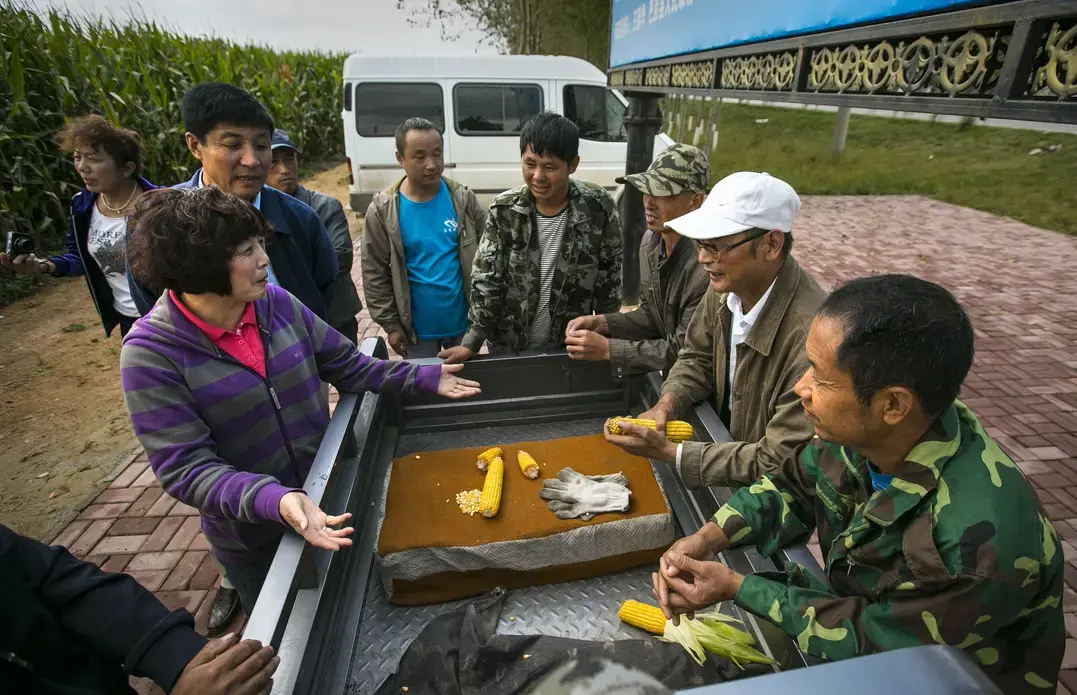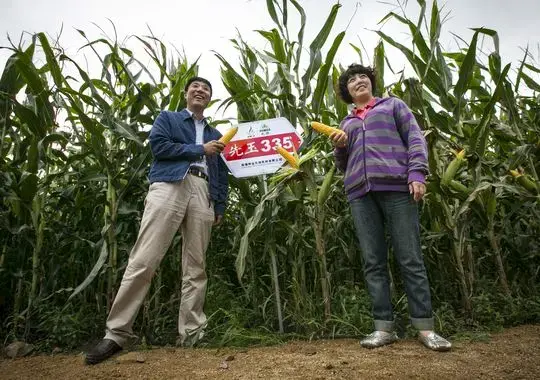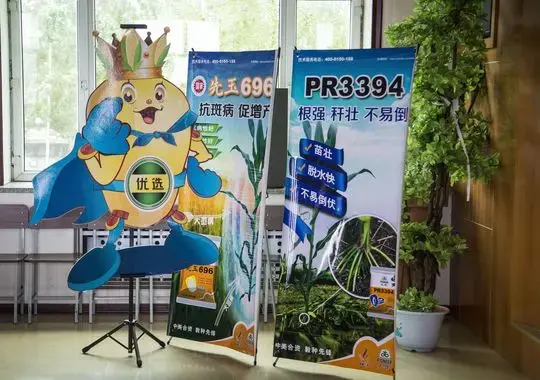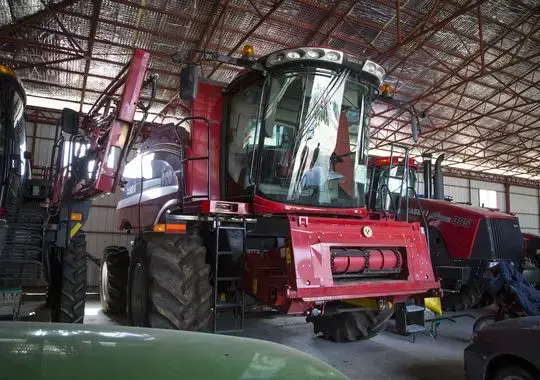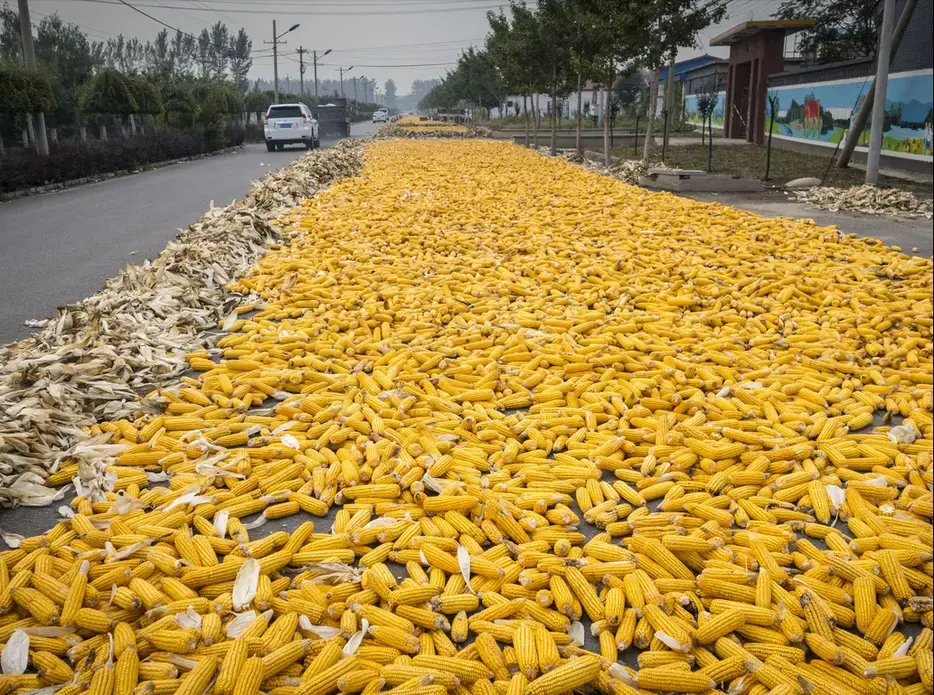Li Shi Hua and his wife, You Haixin, overlook a collection of machinery that might make some Iowa farmers drool.
The lineup includes a new $385,000 Case IH 6130 combine, a new $335,000 Case 385 tractor, plus 36 smaller machines, including equipment made by Deere & Co. and Chinese and Japanese companies.
A cooperative of farmers shares the machines, which it purchased with generous subsidies: The Chinese government paid 60 percent of the cost. Li, the leader of the cooperative, said he paid the rest.
Such arrangements allow the government to sow Iowa-style agriculture and promote corn planting in the black soil of northeast China. The policies also provide fertile ground for DuPont Pioneer, Deere and other U.S. agribusinesses doing business here.
Yet more corn doesn't equal more food security, argues Dermot Hayes, an economist at Iowa State University. Japan, South Korea and other nations gave up self-sufficiency in corn, and "farmers did better things with the soil," such as planting higher-value crops, he said.
Corn — not rice or wheat — is the largest crop in China, and the country has a glut of the grain now. If the economy keeps growing and its people eat more meat, however, the nation expects to have a long-term deficit of corn for livestock feed.
China will increasingly rely on imports to fill part of the deficit, which could expand the market and boost prices for corn grown in Iowa and elsewhere. But increased demand also offers an opportunity to improve Chinese corn production. The northeast, home to 40 percent of China's total corn harvest, has yields that are about two-thirds to three-quarters lower than in the U.S. Corn Belt.
DuPont Pioneer wants to help close the gap. The Johnston-based seed company has already changed Chinese agriculture once, by promoting improved corn hybrids and the use of planting machines.
Now Pioneer believes it can raise yields by 20 to 30 percent in the northeast through a combination of tools — improved seeds, better planting and fertilizing techniques, machine harvesting and even mobile phones.
"Our dream is very simple: to make agriculture in China like the U.S., to take the best practices from the U.S.," said Frank Li, general manager of Dunhuang Seed Pioneer Hi-Bred, Pioneer's joint venture partner in northeast China.
An ocean of corn
Heilongjiang province, in the far northeast, may be the closest China gets to Iowa agriculture. Corn is planted as far as the eye can see in the flat terrain. Deere & Co. and Case IH have assembly plants in the province.
Li Shi Hua's cooperative farms 2,470 acres near Bayan, about 60 miles northeast of Harbin, the capital of the province. Two-thirds of the farm is planted to corn, and the rest is a mix of rice and soybeans.
The area does not offer ideal growing conditions. At 46 degrees north, Bayan has a higher latitude than Minneapolis and Montreal. That means fewer growing days than the U.S. Corn Belt.
The northeast is also far from many of the nation's livestock.
China is corn crazy, however. The area planted to corn in China has increased nearly 40 percent since the mid-2000s, according to U.S. Department of Agriculture data. Since 1990, it's up 32 million acres — more than all the farmland in Iowa.
Fred Gale, a U.S. Department of Agriculture economist, said China's increased soybean imports have allowed farmers to specialize in producing corn, which produces higher yields and profits than soybeans.
Government subsidies also encourage corn planting by pushing prices two or three times higher than U.S. corn prices. The government is now experimenting with reforms that would allow market forces to determine crop prices.
If so, farmers could plant other crops in which China could have an advantage over world competitors, such as vegetables, ISU's Hayes said.
Land could also be freed up to plant soybeans, canola, rice and alfalfa. But farmers in the northeast have no incentive to rotate crops now, said Frank Li, the Pioneer executive.
"They plant corn every year," he said.
Lack of crop rotation hurts the soil. So does excessive applications of nitrogen fertilizer, another common practice that leads to soils with high acidity. Frank Li said farmers don't test the soil before adding fertilizer.
Excessive plowing and removing stalks from fields has led to erosion and loss of organic matter in soil. All of those trends can reduce future yields.
A village of advice
DuPont Pioneer's answer is to train farmers in better agronomy practices. Bayan, for example, has become what it calls a "smart village," where farmers can get a range of services.
Li Shi Hua and You Haixin own a store in Bayan that sells Pioneer seed, plus fertilizer, pesticides and other products. The couple's business also provides precision sowing, aircraft spraying, combine harvesting and grain drying.
Their building has a lecture hall that can seat about 175 farmers. There the farmers can learn agronomy practices and ways to maximize yields.
Pioneer is taking the classroom to the field, too, with mobile phones. The company sends out text messages that alert farmers to frost and storm warnings, provide suggestions on managing disease, and offer other tips.
The use of combines and other machines is part of the strategy, too, to make up for lost labor as more people move to the cities.
A Pioneer customer in the Bayan area, Chi Shu Min, 58, has worked the land since childhood. About five years ago, he began using a machine to plant, and two years ago he started harvesting with a combine, which he owns. His children have moved away, and the machines have saved him labor costs.
Chi farms about 70 acres, some of which he rents from relatives and others. He and other farmers said they are desperately looking for land to expand, but that small landholders want too high a price.
China is debating land reform to increase efficiency and production. Pioneer encourages it, saying consolidation would give farmers greater incentives to take care of the land and invest in quality seed and fertilizer.
Li Shi Hua's cooperative is one answer. About 100 households consolidate their land in return for getting a share of the harvest. The government encourages the arrangement by offering subsidies to buy machinery.
Li also wants the government to provide financial aid to help farmers lease more land. "It's not easy to change the mindset and persuade people to sell the land," he said.
What it means to Iowa
China wants to increase corn yields. That potentially means business for DuPont Pioneer, Monsanto, Stine Seed and other seed companies with Iowa operations, plus makers of equipment.
Iowa could sell more corn. The U.S. Department of Agriculture expects China to become the world's largest corn importer in the next five to six years.
Lots of corn, little storage
China has a huge glut of corn, offering opportunities for makers of grain bins.
Another strong harvest is expected to add to the excess. Traders are having trouble selling corn purchased at a premium after previous harvests, said Fred Gale, a USDA economist.
"A lot of it is bad quality," Gale said. The grain contains mold after being exposed to rain and snow, he said.
Li Shi Hua, a Pioneer seed representative, said dealers have explored buying storage bins, but the investment is too large. Li is storing corn for the government in a large equipment shed.
Sukup Manufacturing of Sheffield sells grain bins in other parts of Asia, but has had limited sales in China. Company officials have traveled to China and have developed relationships there since President Xi Jinping's first trip to Iowa in 1985.
"We've taken a slow approach," said Steve Sukup, the company's chief financial officer.



